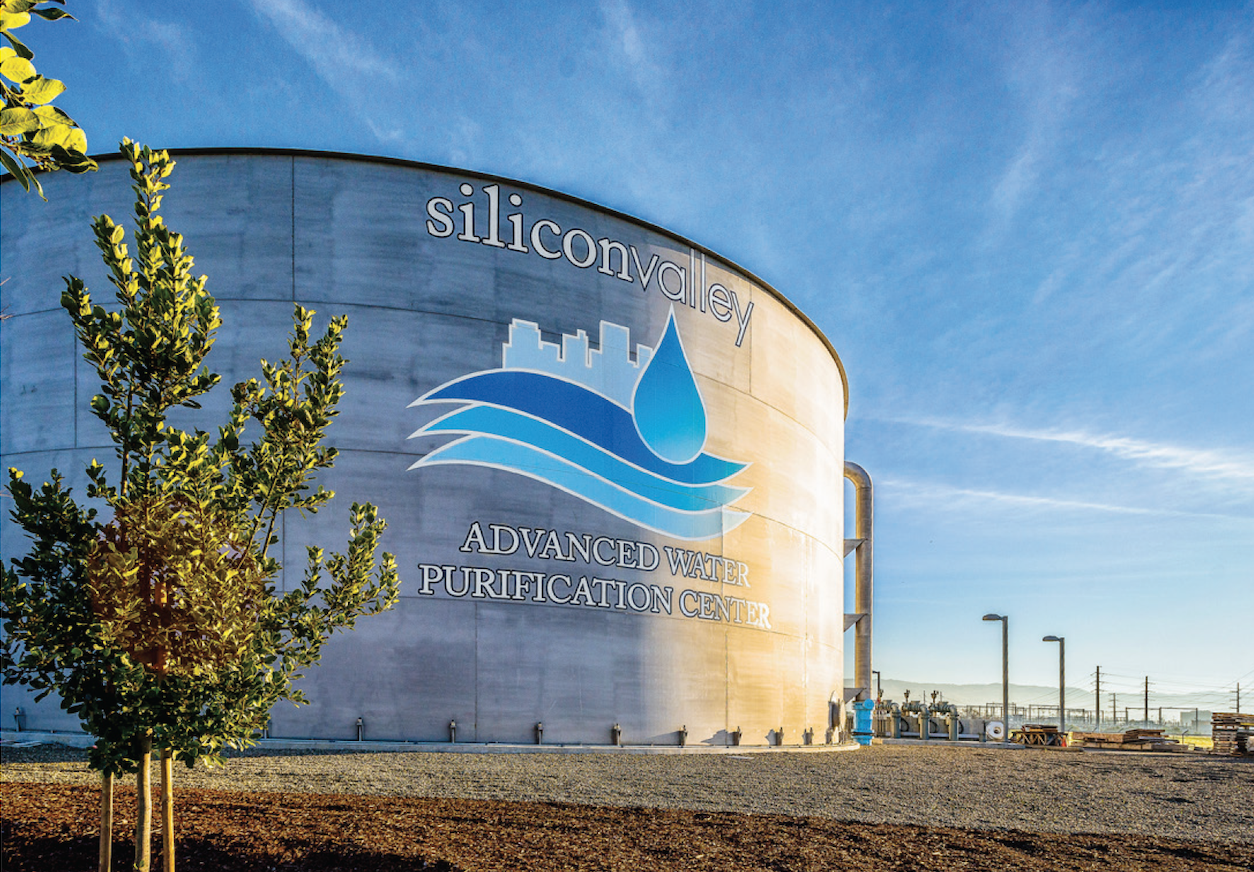

The 2021 drought is one for the record books, with the U.S. West continuing to feel the heat. In California, nearly half the state falls under the U.S. Drought Monitor’s “exceptional drought” status, and many reservoirs are at record lows threatening water supplies and hydroelectric generation. The situation in Santa Clara County is especially troubling after the Federal Energy Regulatory Commission ordered the Anderson Dam drained last fall due to seismic safety concerns.
In June, the Santa Clara Valley Water District instituted a 15% mandatory water use reduction for the county as an emergency measure. However, months later, as the reductions fell far short of the target, Valley Water is trying to stem the water supply deficit through a purification project while still encouraging conservation.
“We want to purify water so that we can reuse it and do just as nature does,” said Valley Water Board Chair Tony Estremera, who spoke at a Sept. 23 press conference, explaining the plan to use purified water to replenish the county’s groundwater basins to increase the drinking water supplies.
The project entails expanding the existing Silicon Valley Advanced Water Purification Center located on Zanker Road in San Jose and building a new facility at the former Los Altos Treatment Plant site on San Antonio Road in Palo Alto. Such recycled water is already being used for landscaping, industrial and agricultural purposes, and Valley Water now wants to expand its use for drinking water following purification.
In addition to maintaining the current 20,000 acre-feet of recycled water produced every year, the short-term goal is to produce 11,000 acre-feet of purified water annually to replenish groundwater aquifers by 2028, which would serve about 50,000 county households. The long-term goal is to produce 24,000 acre-feet of purified water and 33,000 acre-feet of non-potable water by 2040.
According to Valley Water, three out of five Santa Clara County residents support using advanced purified water to bolster drinking water supplies, stating that the water is safe, having undergone a multistep process utilizing microfiltration, reverse osmosis, UV light disinfection and advanced oxidation to remove contaminants. Additionally, when added to groundwater supplies, the water is naturally filtered through the earth’s layers.
The purified water will be conveyed via a new underground pipe connected to Campbell’s groundwater recharge ponds. It would blend with existing water resources and subsequently be used by consumers in much of the county.
“We join other stakeholders in the hope that these negotiations can continue to move forward in a way that benefits all parties involved, and most importantly, our shared customers,” said City of Santa Clara Vice Mayor Raj Chahal at the press conference. “The City of Santa Clara is aggressive about water conservation. We took early action, and declared a drought emergency in July, and have already implemented stage two of our water shortage contingency plan.”
The project is estimated to cost $600 million. It’s being developed through a public-private partnership. A private firm will design, build, finance, operate and maintain the project while Valley Water will maintain ownership of the facilities, paying a guaranteed price per unit of water over a defined period.
Construction is anticipated to begin in 2024, with completion likely in 2028, pending partnership agreements, permits and an environmental review process.
“In the last drought, it was said that folks in the Valley were pumping up water that was there before the Revolutionary War,” Estremera said. “So we’re down to using a finite amount of water, and the only way that we can work ourselves out of this is by reusing that water.”
After her book discussion group on March 25, Santa Clara resident Carol Buchser stopped off…
Bay Area artist Nathan Oliveira (1928-2010) described himself as an abstract artist whose work had…
The California Highway Patrol's so-called "surge" operations in Oakland have netted nearly 400 arrests so…
James Williams wasn’t just Santa Clara’s first African American citizen and one of the first…
Can you spell deja vu? The battle over the best way to teach children how…
A new Sunnyvale rideshare shuttle will make it easier to get around the city’s Peery…
View Comments
A "public-private partnership"?
Who'll be guaranteeing the financing? I'll bet it's us since "gummint" generally borrows at a lower rate.
If the private sector can do this at a profit and (one hopes) "paying good wages and benefits", then surely the public sector can do this for less by eliminating the profits and still "paying good wages and benefits" particularly for what appears to be a lasting need for this water recapture and reuse.
We need, at the least, to have full disclosure of the humans who own and benefit from our "private partner" at the very least. We've seen from the downstate scandal involving USC and an LA County Supervisor that these partnerships fill some unintended and unsavory pockets.